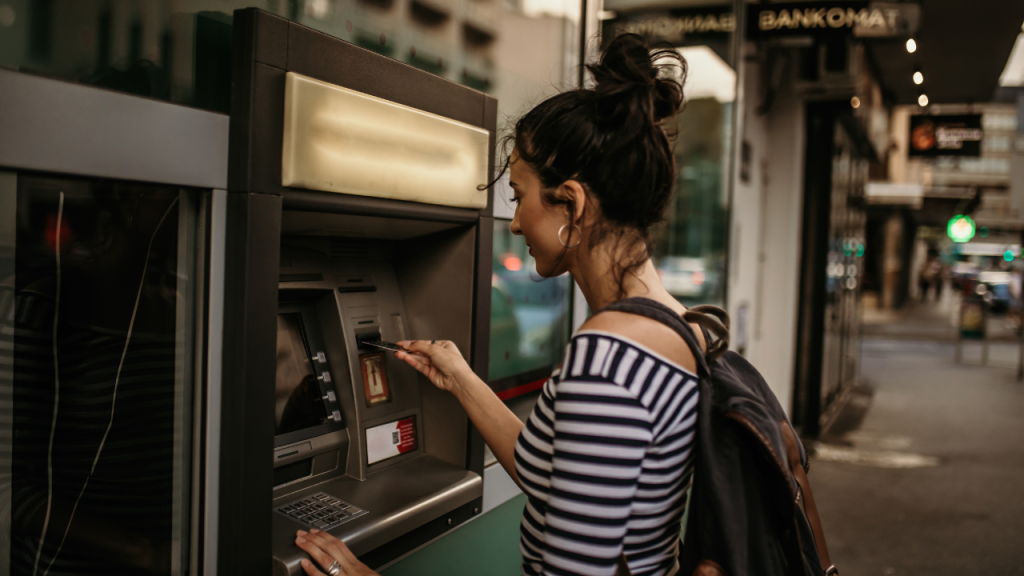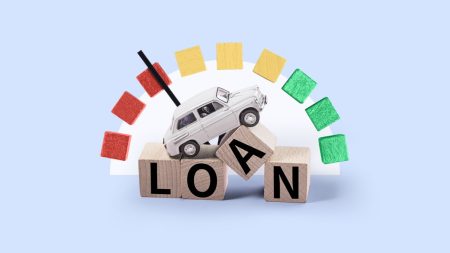Most of us know how to use our credit card to make purchases, but not everybody knows how to get cash from a credit card at an ATM. When you use your credit card to request a cash advance, you can withdraw money from your credit card and use it to pay rent, pay back friends and family, cover bills and more.
Can you use a credit card at an ATM to get a cash advance? Absolutely. Should you? Not unless you need to. Cash advances come with additional fees and high interest rates, so they should only be used as a last resort. Here’s what you need to know about how cash advances work, how to get cash from your credit card at an ATM and which cash advance alternatives you should consider before taking money out of your credit card.
What is a cash advance?
A cash advance is a transaction that allows you to withdraw money from a credit card. Instead of using your credit card to purchase goods or services, you essentially use your credit card to purchase cash. The money you withdraw during a cash advance becomes part of your credit card balance.
Getting cash from a credit card is one way to ensure you have money when you need it, but requesting a cash advance at an ATM can cost you. Expect to pay a cash advance fee at the ATM, and expect to pay a higher interest rate on any cash you withdraw.
In most cases, cash advance interest rates are between 20-25 percent APR, and there isn’t any grace period during which you can pay off your balance without getting charged interest. That cash advance APR will kick in immediately.
To minimize the cost of a cash advance, pay off your credit card balance in full as quickly as possible. The longer you keep a cash advance on your credit card without paying it off, the more you run the risk of racking up high-interest credit card debt.
How to use a credit card at an ATM to withdraw money
If you need to take money out of a credit card at an ATM, here’s how to request a cash advance:
- Insert your credit card into an ATM
- Enter your credit card PIN
- Select the “cash withdrawal” or “cash advance” option
- Select the “credit” option, if necessary (you may be asked to choose between checking, debit or credit)
- Enter the amount of cash you’d like to withdraw
- Acknowledge that you accept any fees associated with the transaction
- Complete the transaction and collect your cash
Using a credit card at an ATM is a lot like using a debit card — just follow the instructions to withdraw cash, acknowledge that you accept the fees and charges and collect your money.
Things to consider before taking a cash advance
There may be an instance where you need to take out a cash advance due to an emergency, but despite whatever reason has brought you to an ATM with your credit card, develop a plan to pay off cash advances as quickly as possible. However, with all of this in mind, there are three major drawbacks to a cash advance. Let’s take a look at a few.
Cash advance fees
First, your bank will charge you a cash advance fee every time you use a credit card at the ATM. Since ATM fees are already higher than ever, paying an additional cash advance fee on your ATM transaction is an extra expense that you should try to avoid whenever possible. The exact fee you will be charged varies by issuer.
Cardholders can find this information in their card’s terms and conditions. Be sure to read those carefully before accepting your fate with a cash advance withdrawal.
High interest rates
Cash advance interest rates can be much higher than the interest rate your credit card issuer charges for purchases — and since cash advances don’t come with grace periods, that interest starts accruing right away. Interest charges on a cash advance can seriously add to your debt, especially if you carry a balance on your credit card from month to month.
Negative effects on credit scores
The third drawback of a cash advance has to do with your credit score. Taking out a cash advance will lower your available credit, so be prepared for your credit score to go down. In other words, if the balance is not paid off and interest begins to accrue immediately, your credit utilization rate will go up and your credit score will go down. You can also expect lenders to view you as more of a credit risk, since people generally only request cash advances when they don’t have enough money in their checking account to cover an expense that requires cash.
Alternatives to a cash advance
If you need cash but don’t want to pay the extra expenses associated with a cash advance, you have a few options. If you have a debit card, you can withdraw money from an ATM without having to pay a cash advance fee, as long as you use an ATM in your bank’s network. You can also visit a bank branch and cash a check in person.
If you need to use your credit card to make a cash payment because you don’t have enough money in your checking account to cover the cost, see if there are other ways to transfer the money. Peer-to-peer payment apps like Venmo or Square Cash (often called the Cash App) allow you to send money to friends and family. This means that if you were hoping to get cash to pay back a friend or relative, you might be able to Venmo or Cash App them instead.
Be aware that Venmo and Square Cash both charge a 3 percent fee for credit card transactions. Also, some credit card issuers code peer-to-peer payments as cash advances. So, it’s still best to use a debit card or a linked checking account with Venmo and Cash App whenever possible.
Lastly, you might want to consider a personal loan. If you need cash quickly but don’t want to deal with the high cost of a cash advance, a personal loan can get you the money you need at a much more reasonable interest rate. As of October 2024, the average personal loan interest rate is just above 12 percent. When you take out a personal loan, you’ll receive a lump sum of money that you can use to pay rent, pay off medical bills or cover other types of expenses that require cash.
One exception to consider
The bottom line
Remember, a cash advance should always be viewed as a last resort. It is important to exhaust all of your other options before you decide to get cash from a credit card at an ATM, such as using a debit card, a payment app or a personal loan. You could even borrow cash from a friend if the opportunity presents itself. Interest rates for cash advances tend to run higher than for regular purchases, so keep in mind the financial consequences if you are not able to pay off your account balance quickly.
Read the full article here










